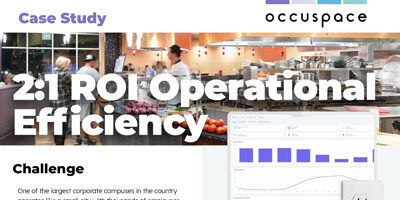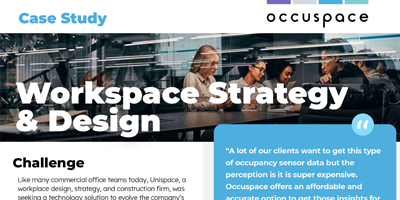08/02/24 - One of the largest corporate campuses in the country operates like a small city with...
Maximizing Efficiency: The Strategic Advantage of Neighborhood-Level Space Utilization Data
07/02/24
Corporate Real Estate (CRE) stakeholders and strategists face strategic challenges, including optimizing underutilized spaces, controlling high operational costs, and making data-driven decisions to align with corporate goals. High-level considerations include the need to ensure sustainability, enhance employee experiences, and future-proof properties against evolving workplace dynamics. Understanding how space is utilized is crucial.
“the challenge lies in determining which "slice" of data is most valuable”
However, the challenge lies in determining which "slice" of data is most valuable for making informed decisions. With options ranging from seat/desk level to neighborhood and floor levels, the answer often depends on the type and amount of space being managed. This blog explores how focusing on neighborhood-level data can provide the highest return on investment (ROI) for CRE professionals.
Strategic Decision-Making at the Neighborhood Level: Neighborhood-level data allows for strategic planning as it organizes space by departments or functions. This makes it easier to implement changes and optimize space without significant resistance.
“Analyzing data at the desk level can be impractical”
Practicality in Managing Large Spaces: Analyzing data at the desk level can be impractical for large spaces, often resulting in minimal impact on overall strategy.
Simplifying High-Stakes Decisions: Evaluating data at the floor or building level involves complex, high-stakes decisions that require significant financial considerations and coordination.
“customers achieve the highest ROI when they focus on neighborhood-level data”
At Occuspace, we've observed that our customers achieve the highest ROI when they focus on neighborhood-level data. Here’s why:
Departmental and Functional Organization: By organizing space by departments (e.g., marketing, sales) or functions (e.g., collaborative areas, focus zones), CRE professionals can make strategic decisions that are easier to implement and more effective in optimizing space utilization.
Ease of Implementation: Changes at the neighborhood level face less resistance compared to desk-level changes, which can be numerous and minor, or floor-level changes, which are major and involve multiple stakeholders.
Efficiency in Large Spaces: For organizations managing substantial amounts of space, desk-level data can be overwhelming and less impactful. Neighborhood-level data strikes a balance between granularity and strategic insight.
To leverage the benefits of neighborhood-level data, consider the following steps:
- Evaluate Your Current Data Usage: Assess how you currently use space utilization data. Are you focusing on desk-level details, or are you looking at broader metrics?
- Shift Your Focus: If you manage a large portfolio, start analyzing data at the neighborhood level. Look at how departments or functional areas use space and identify opportunities for optimization.
- Implement Strategic Changes: Use the insights gained from neighborhood-level data to make strategic decisions that improve space efficiency and user experiences. For example, reallocate underutilized areas to departments that need more space or redesign collaborative zones to enhance productivity.
- Engage Stakeholders: Communicate the benefits of this approach to stakeholders. Highlight how focusing on neighborhood-level data can lead to more effective and less disruptive changes.
- Continuously Monitor and Adjust: Use tools like Occuspace's real-time monitoring technology to continuously gather and analyze data. Adjust your strategies based on the latest insights to ensure ongoing optimization.
Occupancy monitoring equips both C-level leaders and workplace experience roles with actionable insights to optimize space utilization, cut costs, and enhance strategic planning. By focusing on neighborhood-level data, CRE professionals can streamline operations and make informed decisions that align with organizational objectives. This approach not only boosts efficiency and employee satisfaction but also simplifies the management of large spaces, making it easier to implement changes and drive long-term value.
If you'd like to see the LinkedIn poll results from which supporting feedback was collected, click here.
What type of decisions/changes do you make most frequently?
Your comments, thoughts and ideas are welcome.
--- Linus Grasel | Co-Founder & CIO @ Occuspace
Occuspace provides an affordable, easy-to-deploy occupancy monitoring system that can accurately measure real-world space utilization patterns while preserving occupant privacy. To learn more, visit us or set up a free consultation at https://web.occuspace.io/
Stay Informed - Subscribe Today!




